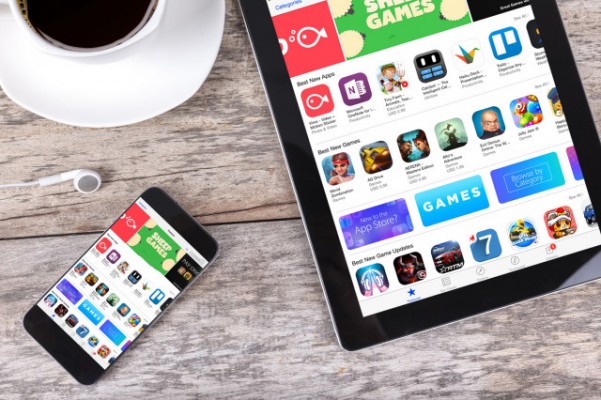Apple revealed its Q4 2015 financial results on 27 October, so we bring you the results, and compare them to the estimates and predictions from around the web.
Apple announced its financial results for the fourth quarter of fiscal 2015 on Tuesday 28 October. Here you’ll find out how many iPhones, iPads, Macs, Apple Watches and other products Apple sold during it’s fourth fiscal quarter of 2015 which ended on 30 September.
How to listen to Apple’s earnings call Q4 2015
Apple’s earnings report conference call began on Tuesday 27 October at 2pm PT, which was 9pm GMT. The results will be for the quarter that began on 29 June and ended on 30 September. Apple’s financial year runs from September to September.
You can still listen to the conference call on Apple’s website.
Apple financial results Q4 2015: How much money did Apple make?
Apple posted quarterly revenue of $51.5 billion and quarterly net profit of $11.1 billion, which is $1.96 per diluted share. This compares to revenue of $49.6 billion and profit of £10.7 billion last quarter, and $42.123 billion in revenue in the year ago quarter.
This means revenues leapt by 22 per cent year-on-year, while profit was up 31 per cent.
The company has predicted that this quarter, it would see revenue of between $49 and $51 billion, with gross margin between 38.5 percent and 39.5 percent. Those estimates actually caused some concern among investors because they are reasonably low for the fourth quarter, which led to a decline in share price following last quarter’s call. Apple narrowly beat its estimates.
Apple financial results: fiscal year 2015
Of course, the fourth quarter results is also Apple’s chance to recap on the events of the year, and reveal the final profit and revenue figures for those past 12 months.
Speaking to analysts the conference call to announce Apple’s financial results for the fiscal fourth quarter, and the financial results for the fiscal year 2015, Apple CEO Tim Cook celebrated: “A very strong finish to a record-breaking year”.
He reported that: “Revenue of 234 billion, an increase of 28 percent, and 58 billion dollars over 2014. To put that into some context, our growth in one year was greater than the full-year revenue of almost 90 percent of the companies in the Fortune 500.”
The company “generated over 53 billion dollars in net income, and grew earnings per share by 43 percent,” during the year.
Cook told analysts: “In the past 12 months around the world, we’ve sold over 300 million devices, including 231 million iPhones, 55 million iPads, and 21 million Macs, setting new unit records and increasing our global market share for both iPhone and Mac.”
He emphasized that Apple, “accomplished all of these things while intensifying our efforts to protect the environment, to promote equality and human rights, and to ensure the security and privacy we know our customers deserve”
Apple financial results Q4 2015: Guidance for next quarter
Apple provided the following guidance for its fiscal 2016 first quarter, which will run to the end of December.
Revenue between $75.5 billion and $77.5 billion
Gross margin between 39 percent and 40 percent
Operating expenses between $6.3 billion and $6.4 billion
Other income/(expense) of $400 million
Tax rate of 26.2 percent
During Apple’s Q&A with analysts that followed Apple CEO Tim Cook’s summary of the quarter, Morgan Stanley analyst Katie Huberty asked whether Apple is concerned that it looks like it will see “only low single digit revenue growth” in the next quarter. In response Cook referred to “currency growth rates” and suggested he was happy with the estimates.
Apple financial results Q4 2015: How many iPhones did Apple sell?
In the fiscal forth quarter of 2015 Apple sold 48.046 million iPhones, and made $32,209 billion in revenue from those sales.
This isn’t far off what the company sold in the third quarter so is likely to raise some concerns that iPhone growth is slowing, since the new iPhone 6s and iPhone 6s Plus were on sale for a small part of the quarter. In comparision, last quarter, Apple announced that it sold 47.5 million iPhones. Apple also made $31.368 billion in revenue from iPhone sales.
The figures look better in comparison to the year ago quarter when Apple sold 39.272 million iPhones and made $23.678 billion in revenue from those sales.
Cook revealed that the company saw “sales of 48 million iPhones, beating our expectations and up 22 percent year over year.”
With the new iPhone 6s and iPhone 6s Plus on sale for a small part of the quarter, analysts had predicted that Apple would have sold to 48.7 million iPhones. However, the next quarter (Apple’s first quarter of 2016) should represent a huge increase that could beat last year’s record-breaking Christmas quarter with a whopping 77.79 million iPhone sales.
The new iPhones became available on 25 September, so there wasn’t a lot of time for them to make a big impact on numbers for that quarter, but Apple released a press release following the call in which it revealed that it had sold more than 13 million iPhoen 6s (and 6s Plus) smartphones in the three days following launch.
In the call, Cook stated that: “We exited the quarter with demand for our new iPhones exceeding supply, but we’ve made good progress with our manufacturing ramp in the initial weeks of October”
Cook also revealed that: “The iPhone 6S is the most popular iPhone that we currently sell”, adding: “If you look at iPhone 6 today, and add iPhone 6 Plus, and compare that to last year’s 5S, we are doing better at that price point than we were previously.”
Later in the Q&A with analysts Cook said: “We recorded the highest rate on record for Android switchers last quarter at 30 percent.” Regarding this, Cook also revealed: “That number [30%] is the largest that we’ve ever recorded since we began measuring it three or so years ago.”
Regarding the iPhone upgrade plans introduced with the iPhone 6s and the impact he thinks they will have on future sales, Cook told UBS analyst Steve Milunovich: “It seems to me it’s going to act as a catalyst to accelerate some of those upgrades, and I think that’s not something that we’re going to see this quarter or next quarter, but it seems like it’s going to happen, beginning a year from now or so.”
Apple financial results Q4 2015: How many iPads did Apple sell?
Last quarter, Apple announced that it sold 10.931 million iPads so analysts and Apple investors will be disappointed that Apple sold even fewer iPads in the fourth quarter – just 9,883 million. In the same quarter in 2014 Apple sold 12,316 iPads so there is no doubt that that market is contracting.
Revenue from iPad sales in the just gone quarter was $4.276 billion, comparet to last quarter’s $4.538 billion. Just like last quarter Apple made more money from Mac sales than iPad sales – $4.276 billion compared to $6.882 billion. See below for more on Mac sales.
It’s no real surprise that iPad sales declined again, with the only new Apple tablet available to buy from the company during the quarter being the iPad mini 4 – and that for only a short period of time. But the iPad Pro is set to launch in November, so we’ll be looking ahead to the Christmas quarter to find out how that affects Apple’s declining iPad sales.
During the call, Cook referred to the iPad Pro, saying: “iPad Pro will enable a new generation of apps for entertainment and productivity, design and illustration, engineering and medical.”
Cook didn’t say much more about iPad during the call with analysts, other than to comment that nobody had asked him about the device. He did say that: “If you look at iPad as just an example, in China, 68 percent of the people that purchased an iPad, it was the first tablet they’ve owned, and 40 percent of those had never owned any Apple product.”
One reason why iPad sales have slowed may be that despite loving the device, those who currently own an iPad are not yet ready to upgrade to a newer model.
Apple financial results Q4 2015: How many Apple Watches did Apple sell?
This was the second full quarter of Apple Watch availability, so we were interested to see how sales have faired. Apple introduced two new colours of the £299 Apple Watch Sport in September, so that may well have helped boost figures.
Unfortunately, Apple doesn’t reveal the precise figures for Apple Watch sales, in it’s Summary Data document the company bundles Apple Watch with Other Products – a category that also includes Apple TV and iPods, amongst other things. All Apple reveals is the revenue figure in this category (not numbers of units sold) and the figure this quarter was $3.048 billion in revenue.
That compares to $2.641 billion in the last quarter, which was already up on the previous quarter ($1.689 billion). In the same quarter of 2014 Apple made $1.896 billion from this category. The Other category saw a sales jump of 61 per cent compared to the same quarter in 2014. So things are definately on the up and the Watch is likely to be the reason.
However, Cook did reveal that: “Sales of Apple Watch were also up sequentially and were ahead of our expectations.”
He also added that: “Today, there over 13,000 apps on the Watch App Store, including over 1300 native apps such as Facebook Messenger, MLB At Bat, and RunKeeper, and the number is growing rapidly.”
Cook has already revealed that Watch sales are expected to soar during the Christmas quarter, so it will be interesting to see how the category fairs in the Christmas shopping quarter.
Explaining why the Watch sales aren’t broken down when he announced the third quarter results, Apple CEO Tim Cook told analysts: “We made the decision back in September not to disclose the shipments on the watch, and that was not a matter of not being transparent, it was a matter of not giving our competition insight [on] a product that we worked hard on.”
This doesn’t stop analysts estimating Watch sales, with the highest coming from The Braeburn Group analysts Lee Storch and Robert Paul Leitao who think Apple sold 6 million Apple Watches during the quarter according to Fortune. The lowest comes from Piper Jaffray analyst Gene Munster and Bernstein Research’s Toni Sacconaghi who both predict 2.5 million units were sold. The average estimate is 3.95 million.
Apple financial results Q4 2015: Apple TV
Regarding the Apple TV which should arrive with customers this week, Cook said: “We want to provide the same innovation in the living room that we’ve delivered in our iOS devices. People are already watching more TV through apps today, and we think apps represent the future of TV.”
“We’re also looking forward to bringing Apple Music to the new Apple TV beginning this week,” he added.
Apple financial results Q4 2015: How many Macs did Apple sell?
We’ve been impressed by Apple’s Mac sales for a few quarters now and this quarter didn’t disappoint. Apple sold 5.709 million Macs, making revenue of $6.882 billion.
In comparison, Apple sold 4.796 million Macs in its fiscal third quarter, making revenue of $6.030 billion, and in the year ago quarter the company sold 5.520 million Macs, making revenue of $6.625 billion.
This is astonishing growth in a market that keeps contracting, at least for other PC manufacturers.
Cook revealed that Apple: “Sold an all-time record 5.7 million Macs, continuing to defy the negative trend in the global personal computer market, which IDC estimates contracted by 11 percent.”
What’s interesting is that the prediction was that PC sales would decline due to increasing tablet sales, and yet, based on the declining sales of iPads (which are still the most popular tablets on the market), tablets aren’t as popular as anticipated. Despite this, PC sales are declining while Mac sales are increasing, suggesting that there is a movement from Windows PC to Mac rather than PC to tablet.
We can expect the sales figures to increase even further over the Christmas period thanks to the launch of new iMacs, and we anticipate some other Mac upgrades.
Apple financial results Q4 2015: Software and services
In terms of software and services, Cook noted that: “The App Store set new all-time quarterly records for both the number of transacting customers and overall revenue.”
“helped fuel 1.5 billion dollars in services revenue, also an all-time record”
“The App Store is growing over 20 percent, it grew 25 percent last quarter,” he later told analysts.
Regarding iOS 9, Cook said the new iPad and iPhone operations system was “on track to be downloaded by more users than any software release in Apple’s history, with 61 percent of active iOS devices already running it less than six weeks after its September the 16th release”
Cook said little about the launch of El Capitan on 30 September though, just describing it as making “the world’s most advanced desktop operating system more refined and powerful than ever before.”
Apple Music also got a mention: “Over 15 million individual and family accounts are experiencing Apple Music, including over 6 and a half million paying customers,” revealed Cook.
Cook was also pleased with the adoption of Apple Pay, saying: “Apple Pay is seeing double-digit growth in transaction, month after month.”
He announced that Apple is partnering with American Express to bring Apple Pay to that companies customers.
Finally regarding HomeKit and CarPlay, Cook said: “In the home, there are over 50 brands working on HomeKit-enabled accessories that can be privately and securely controlled from your iPad and iPhone.”
While, “In the car, more than 50 automobile models have been announced with CarPlay support”
Apple financial results Q4 2015: China & Emerging markets
One reason for the excellent performance of the iPhone at launch is thought to be the fact that it was available in China on launch day for the first time. This is a massive market that Apple is keen to tap into, and seems to be doing so with some success.
“Revenue in greater China nearly doubled year-over-year,” according to Cook. And he expects this share to continue to grow: “China’s middle class had about 50 million people in it, if you look ahead five years it will have ten times that number in it. And I feel like we’re reasonably well positioned in China,” he added.
There are some concerns about China’s economy, but Cook doesn’t seem to share them. Regarding concerns about the Chinese market, Cook said that if he only looked at Apple’s own sales figures, “I wouldn’t know there was any economic issue at all in China.”
When speaking to Cross Research analyst Shannon Cross, Cook emphasised the success of the iPhone in this market, he said: “In greater China we grew 87 percent, the market grew 4 (if you take iPhone out of the market number, so the market ex-iPhone actually contracted slightly).”
Regarding other emerging markets, Cook revealed to analysts some concerns: “Our performance in emerging markets, although it’s quite good, and our revenue is good, our market share is low, and the LTE penetration in these markets is quite low.” However, “I was really impressed last quarter with our progress in Vietnam and Indonesia and India among others,” he said later.
Apple financial results Q4 2015: Enterprise
Cook also spoke in the call about Apple’s successes in the enterprise. He revealed that sales to businesses grew 40% in the fiscal year, bringing in $25 billion in revenue.
“The enterprise business is not to be underestimated. I doubt very many people knew that we have a $25 billion enterprise business that we’ve quietly built in not too many years. Our penetration is low, but we have significant actions going on to really deepen that,” he said.







